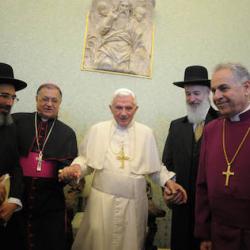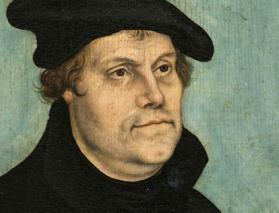In a 1979 article in the Journal of Ecumenical Studies, Russell Richey highlighted what he considered an overlooked source for the denominational system of American Protestantism. That organization of religious groups is typically seen as the product of theories of toleration. Richey argues that “the Puritans and Evangelicals who advocated indulgence and sought toleration were not the sole architects of the denominational theory of the church. Of great importance also was the intellectual contribution of Latitudinarians and Rationalists who advocated catholicity and sought comprehension” (215).
Some of the groups that later became major denominations, he observes, started out as “movements committed to Christian unity.” Disciple movements in 19th-century America were “dedicated to the overthrow of denominations and the unification of all Christians upon a creed of fundamentals.” Methodism too was “a movement to spread scriptural holiness over the land” and “by intention quite catholic. John Wesley, in assuming the name of catholic Christian, indicated the character of the unity to be sought” (215). Evangelical denominations, though warring on many issues, “came to be seen as one body, sharing the same great work, possessed of the same form, driven by one vision” (216).
But the roots of denominatonalism go back beyond the nineteenth century. Richey finds two sources for denominationalism: “The one, toleration, moved from conscience, voluntarism, and diversity toward spiritual, affectionate unity and toleration. This we designate, for sake of brevity, as the principle of toleration; it was to become the Nonconformist ideal. The other, catholicity, the Anglican, the Elizabethan ideal, sought to interpret unity so as to permit diversity. Toleration and catholicity were ideals, tendencies. . . . They shared the goal of freedom. Toleration sought openness by legitimizing pluralism and discovering some unity amid the plurality; catholicity found freedom in a broadly conceived unity and was willing to entertain dissent within that unity and even without” (220).
Following the lead of William Chillingworth, who pressed for a Scripture-based creed of “fundamental” doctrines, Richard Baxter argued that “Two things have set the church on fire, and have been the plagues of it for above a thousand years. First enlarging our creed, and making more fundamentals than God ever made. Second composing, (and so imposing), our creeds and confessions in our own words and phrases. When men have learnt more manners and humility than to accuse God’s language as too general and obscure (as if they could mend it), and have more dread of God and compassion on themselves than to make those fundamentals or certainties which God never made so; and when they reduce their confessions first to their due extent, and second to Scripture phrase (that dissenters may not scruple subscribing) then I think, and never till then, shall the church have peace about doctrinals. It seems to me no heinous Socinian notion which Chillingworth is blamed for, namely, let all men believe the Scripture, and that only, and endeavour to believe it in the true sense, (and promise this) and require no more of others, and they shall find this not only a better, but the only means to suppress heresy and restore unity” (226). He wanted a church holding to the creed, the Lord’s prayer, and the ten Commandments as “our Essentials or Fundamentals.”
Advocates of broad catholic unity were not appreciated by those who sought tighter doctrinal regulations. Catholic Protestants were regarded as “trimmers and double dealers,” and “the passion of a Baxter or a Mather for uniting the separate parties in Christendom made him seem less than fully committed to his own party” (225).
(Richey, “‘Catholic’ Protestantism and American Denominatonalism,” Journal of Ecumenical Studies, 16:2 [1979,] 213-231.)















